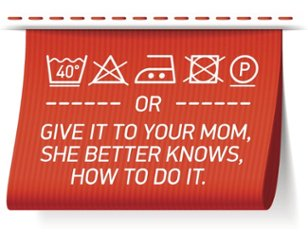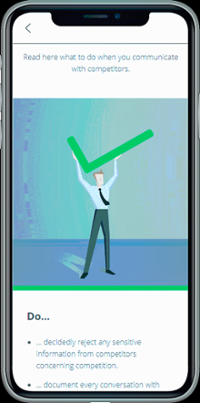Digitization, New Work, agile, networks of teams – these are business trends that keep L&D professionals busy these days. When processes change and teams regroup in ever shorter cycles, employees have to be trained for or informed about these changes. Yet, in such dynamics there remains little time for developing formal training. Employees have to be enabled quickly. Here, performance support can be a good solution.
Contributing to measurable business results with performance support
“A tool or other resource, from print to technology-supported, which provides just the right amount of task guidance, support, and productivity benefits to the user – precisely at the moment of need”.
According to Marc Rosenberg‘s definition performance support does not only consist in documents and resources but also in tools which help people to do their work correctly and efficiently. What is important for performance support are results, i.e. that people deliver a certain performance. Hence, the goal is not to reach a certain number of completed trainings or certificates. Instead, employees are to be enabled quickly and in the flow of work.
This pragmatic approach turns L&D staff into Performance Detectives (as Charles Jennings calls them). They analyze how processes can be optimized, how the best of staff work, and what everyone else can adopt from these best practices. For many years now it has been stressed that L&D should align their services with business goals. Performance support does exactly that when it focuses on the contribution of work performance to the business purpose instead of on the completion of trainings.
.gif?width=220&height=206&name=giphy%20(1).gif)
Performance support can complement formal training. At its best, it is a stand-alone measure. For example, do you remember Clippy, MS Word’s virtual assistant, whom Microsoft introduced in the 1990s? When you were just working with MS Word and did not remember how to insert a page-break, for instance, you could ask Clippy. Clippy helped you with a hint (in the best case) so that you could keep on working.
Curated content & resources for the moment of need
You may have noted: Performance support is always PULL-content. Employees draw on it when they feel a burning need. Conrad Gottfredson and Bob Mosher have identified „5 Moments of Need“, in which performance support can be deployed.
- “When people are learning how to do something for the first time (New);
- When people are expanding the breadth and depth of what they have learned (More);
- When they need to act upon what they have learned, which includes planning what they will do, remembering what they may have forgotten, or adapting their performance to a unique situation (Apply);
- When problems arise, or things break or don’t work the way they were intended (Solve); and,
- When people need to learn a new way of doing something, which requires them to change skills that are deeply ingrained in their performance practices (Change).”
In everyday life, we often use performance support without being aware of it: The labels with washing instructions in clothes are one example of performance support. Thanks to them, we do not have to memorize how to wash our favorite sweater.

What are good use cases for performance support?
Performance support can be a stand-alone measure as well as an add-on to e-learning courses and/or face-to-face trainings where it can support learning transfer. Many of us have self-made job aids or checklists for tasks that we perform only infrequently – a classic application of performance support. Moreover, performance support can help when standardized and reliable results are key. With complex tasks, performance support helps employees to focus on the crucial points. Pilots, for example, rely on checklists when they prepare planes for take-off.
Performance support is also recommended for critical tasks, i.e. if mistakes lead to severe consequences such as dangers, high costs, or loss of an organization’s reputation. The story of Atul Gawande, surgeon and Harvard researcher, is impressive. I came across it through a blog article by Ger Driesen. By introducing a checklist for surgeries, Atul Gawande was able to reduce complications by 35%, deaths by even 47%.
For one of our clients, we developed a digital compliance course about anti-trust law. In addition to the courses there is mobile performance support. Employees can draw on these resources in difficult situations to remind themselves of how to act correctly, e.g. before meetings with competitors.


Implementation
Performance support can assume many different forms and does not necessarily have to be digital. It could also be a post-it note on your desk with the crucial steps of a process. It could be pdf-checklists, elaborate flowcharts, and decision trees. Below, you can see a flowchart that we have created for a client. Employees can use it to remind themselves of how to act when the atmosphere with clients becomes charged:

Another example of performance support are small wizards that are embedded into software, such as Clippy, WalkMe or Userlane. They help to use an entire software or find functionalities that are infrequently needed. Augmented Reality adds a new dimension to performance support. BMW, for instance, employs augmented reality glasses in order to show mechanics what the next steps in a procedure are and where to find the right tools. FAQs or a support hotline can be performance support as well as a colleague whom you can quickly ask personally or via an Enterprise Social Network. Questions that ended up at service hotlines in the past can now already be answered by chatbots and virtual assistants.
Hence, the options for implementing performance support are diverse. Performance support can be a great tool to empower employees to do their work – without lengthy trainings, travel time, and absences from their workplace. You can avoid learning transfer problems because employees are already right in the flow of work when using performance support.
Do you want to foster learning through and at work, too? Or are you facing higher demand for induction training so that employees need to be onboarded with extra speed? Performance support can be a solution here. Also when you are simply curious and want to see more examples of our work: Get in touch with us. We love to show you more and to advise you how you can pragmatically support employees in your specific business situation.


